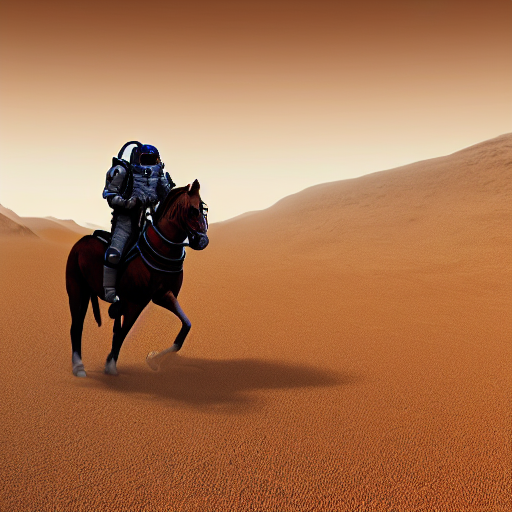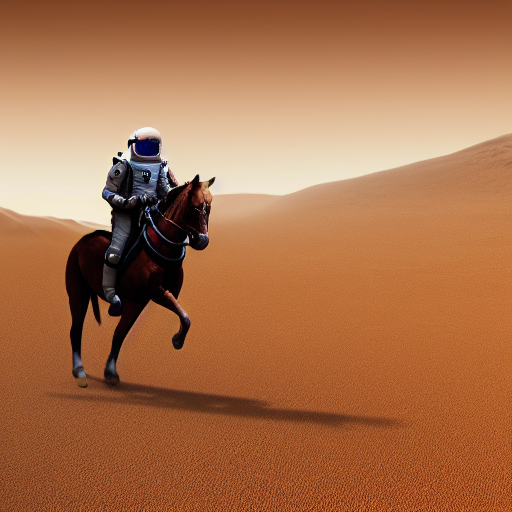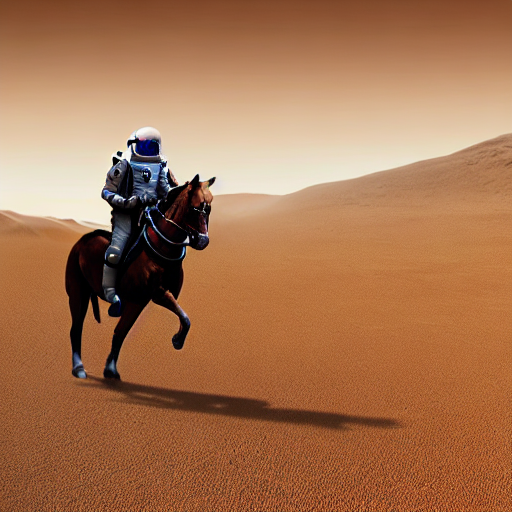Spaces:
Running
Running
File size: 9,919 Bytes
9a33782 |
1 2 3 4 5 6 7 8 9 10 11 12 13 14 15 16 17 18 19 20 21 22 23 24 25 26 27 28 29 30 31 32 33 34 35 36 37 38 39 40 41 42 43 44 45 46 47 48 49 50 51 52 53 54 55 56 57 58 59 60 61 62 63 64 65 66 67 68 69 70 71 72 73 74 75 76 77 78 79 80 81 82 83 84 85 86 87 88 89 90 91 92 93 94 95 96 97 98 99 100 101 102 103 104 105 106 107 108 109 110 111 112 113 114 115 116 117 118 119 120 121 122 123 124 125 126 127 128 129 130 131 132 133 134 135 136 137 138 139 140 141 142 143 144 145 146 147 148 149 150 151 152 153 154 155 156 157 158 159 160 161 162 163 164 165 166 167 168 169 170 171 172 173 174 175 176 177 178 179 180 181 182 183 184 185 186 187 188 189 190 191 192 193 194 195 196 197 198 199 |
[](#load-schedulers-and-models)Load schedulers and models
=========================================================


Diffusion pipelines are a collection of interchangeable schedulers and models that can be mixed and matched to tailor a pipeline to a specific use case. The scheduler encapsulates the entire denoising process such as the number of denoising steps and the algorithm for finding the denoised sample. A scheduler is not parameterized or trained so they don’t take very much memory. The model is usually only concerned with the forward pass of going from a noisy input to a less noisy sample.
This guide will show you how to load schedulers and models to customize a pipeline. You’ll use the [stable-diffusion-v1-5/stable-diffusion-v1-5](https://hf.co/stable-diffusion-v1-5/stable-diffusion-v1-5) checkpoint throughout this guide, so let’s load it first.
Copied
import torch
from diffusers import DiffusionPipeline
pipeline = DiffusionPipeline.from\_pretrained(
"stable-diffusion-v1-5/stable-diffusion-v1-5", torch\_dtype=torch.float16, use\_safetensors=True
).to("cuda")
You can see what scheduler this pipeline uses with the `pipeline.scheduler` attribute.
Copied
pipeline.scheduler
PNDMScheduler {
"\_class\_name": "PNDMScheduler",
"\_diffusers\_version": "0.21.4",
"beta\_end": 0.012,
"beta\_schedule": "scaled\_linear",
"beta\_start": 0.00085,
"clip\_sample": false,
"num\_train\_timesteps": 1000,
"set\_alpha\_to\_one": false,
"skip\_prk\_steps": true,
"steps\_offset": 1,
"timestep\_spacing": "leading",
"trained\_betas": null
}
[](#load-a-scheduler)Load a scheduler
-------------------------------------
Schedulers are defined by a configuration file that can be used by a variety of schedulers. Load a scheduler with the [SchedulerMixin.from\_pretrained()](/docs/diffusers/main/en/api/schedulers/overview#diffusers.SchedulerMixin.from_pretrained) method, and specify the `subfolder` parameter to load the configuration file into the correct subfolder of the pipeline repository.
For example, to load the [DDIMScheduler](/docs/diffusers/main/en/api/schedulers/ddim#diffusers.DDIMScheduler):
Copied
from diffusers import DDIMScheduler, DiffusionPipeline
ddim = DDIMScheduler.from\_pretrained("stable-diffusion-v1-5/stable-diffusion-v1-5", subfolder="scheduler")
Then you can pass the newly loaded scheduler to the pipeline.
Copied
pipeline = DiffusionPipeline.from\_pretrained(
"stable-diffusion-v1-5/stable-diffusion-v1-5", scheduler=ddim, torch\_dtype=torch.float16, use\_safetensors=True
).to("cuda")
[](#compare-schedulers)Compare schedulers
-----------------------------------------
Schedulers have their own unique strengths and weaknesses, making it difficult to quantitatively compare which scheduler works best for a pipeline. You typically have to make a trade-off between denoising speed and denoising quality. We recommend trying out different schedulers to find one that works best for your use case. Call the `pipeline.scheduler.compatibles` attribute to see what schedulers are compatible with a pipeline.
Let’s compare the [LMSDiscreteScheduler](/docs/diffusers/main/en/api/schedulers/lms_discrete#diffusers.LMSDiscreteScheduler), [EulerDiscreteScheduler](/docs/diffusers/main/en/api/schedulers/euler#diffusers.EulerDiscreteScheduler), [EulerAncestralDiscreteScheduler](/docs/diffusers/main/en/api/schedulers/euler_ancestral#diffusers.EulerAncestralDiscreteScheduler), and the [DPMSolverMultistepScheduler](/docs/diffusers/main/en/api/schedulers/multistep_dpm_solver#diffusers.DPMSolverMultistepScheduler) on the following prompt and seed.
Copied
import torch
from diffusers import DiffusionPipeline
pipeline = DiffusionPipeline.from\_pretrained(
"stable-diffusion-v1-5/stable-diffusion-v1-5", torch\_dtype=torch.float16, use\_safetensors=True
).to("cuda")
prompt = "A photograph of an astronaut riding a horse on Mars, high resolution, high definition."
generator = torch.Generator(device="cuda").manual\_seed(8)
To change the pipelines scheduler, use the [from\_config()](/docs/diffusers/main/en/api/configuration#diffusers.ConfigMixin.from_config) method to load a different scheduler’s `pipeline.scheduler.config` into the pipeline.
LMSDiscreteScheduler
EulerDiscreteScheduler
EulerAncestralDiscreteScheduler
DPMSolverMultistepScheduler
[LMSDiscreteScheduler](/docs/diffusers/main/en/api/schedulers/lms_discrete#diffusers.LMSDiscreteScheduler) typically generates higher quality images than the default scheduler.
Copied
from diffusers import LMSDiscreteScheduler
pipeline.scheduler = LMSDiscreteScheduler.from\_config(pipeline.scheduler.config)
image = pipeline(prompt, generator=generator).images\[0\]
image

LMSDiscreteScheduler

EulerDiscreteScheduler

EulerAncestralDiscreteScheduler

DPMSolverMultistepScheduler
Most images look very similar and are comparable in quality. Again, it often comes down to your specific use case so a good approach is to run multiple different schedulers and compare the results.
### [](#flax-schedulers)Flax schedulers
To compare Flax schedulers, you need to additionally load the scheduler state into the model parameters. For example, let’s change the default scheduler in [FlaxStableDiffusionPipeline](/docs/diffusers/main/en/api/pipelines/stable_diffusion/text2img#diffusers.FlaxStableDiffusionPipeline) to use the super fast `FlaxDPMSolverMultistepScheduler`.
The `FlaxLMSDiscreteScheduler` and `FlaxDDPMScheduler` are not compatible with the [FlaxStableDiffusionPipeline](/docs/diffusers/main/en/api/pipelines/stable_diffusion/text2img#diffusers.FlaxStableDiffusionPipeline) yet.
Copied
import jax
import numpy as np
from flax.jax\_utils import replicate
from flax.training.common\_utils import shard
from diffusers import FlaxStableDiffusionPipeline, FlaxDPMSolverMultistepScheduler
scheduler, scheduler\_state = FlaxDPMSolverMultistepScheduler.from\_pretrained(
"stable-diffusion-v1-5/stable-diffusion-v1-5",
subfolder="scheduler"
)
pipeline, params = FlaxStableDiffusionPipeline.from\_pretrained(
"stable-diffusion-v1-5/stable-diffusion-v1-5",
scheduler=scheduler,
variant="bf16",
dtype=jax.numpy.bfloat16,
)
params\["scheduler"\] = scheduler\_state
Then you can take advantage of Flax’s compatibility with TPUs to generate a number of images in parallel. You’ll need to make a copy of the model parameters for each available device and then split the inputs across them to generate your desired number of images.
Copied
\# Generate 1 image per parallel device (8 on TPUv2-8 or TPUv3-8)
prompt = "A photograph of an astronaut riding a horse on Mars, high resolution, high definition."
num\_samples = jax.device\_count()
prompt\_ids = pipeline.prepare\_inputs(\[prompt\] \* num\_samples)
prng\_seed = jax.random.PRNGKey(0)
num\_inference\_steps = 25
\# shard inputs and rng
params = replicate(params)
prng\_seed = jax.random.split(prng\_seed, jax.device\_count())
prompt\_ids = shard(prompt\_ids)
images = pipeline(prompt\_ids, params, prng\_seed, num\_inference\_steps, jit=True).images
images = pipeline.numpy\_to\_pil(np.asarray(images.reshape((num\_samples,) + images.shape\[-3:\])))
[](#models)Models
-----------------
Models are loaded from the [ModelMixin.from\_pretrained()](/docs/diffusers/main/en/api/models/overview#diffusers.ModelMixin.from_pretrained) method, which downloads and caches the latest version of the model weights and configurations. If the latest files are available in the local cache, [from\_pretrained()](/docs/diffusers/main/en/api/models/overview#diffusers.ModelMixin.from_pretrained) reuses files in the cache instead of re-downloading them.
Models can be loaded from a subfolder with the `subfolder` argument. For example, the model weights for [stable-diffusion-v1-5/stable-diffusion-v1-5](https://hf.co/stable-diffusion-v1-5/stable-diffusion-v1-5) are stored in the [unet](https://hf.co/stable-diffusion-v1-5/stable-diffusion-v1-5/tree/main/unet) subfolder.
Copied
from diffusers import UNet2DConditionModel
unet = UNet2DConditionModel.from\_pretrained("stable-diffusion-v1-5/stable-diffusion-v1-5", subfolder="unet", use\_safetensors=True)
They can also be directly loaded from a [repository](https://huggingface.co/google/ddpm-cifar10-32/tree/main).
Copied
from diffusers import UNet2DModel
unet = UNet2DModel.from\_pretrained("google/ddpm-cifar10-32", use\_safetensors=True)
To load and save model variants, specify the `variant` argument in [ModelMixin.from\_pretrained()](/docs/diffusers/main/en/api/models/overview#diffusers.ModelMixin.from_pretrained) and [ModelMixin.save\_pretrained()](/docs/diffusers/main/en/api/models/overview#diffusers.ModelMixin.save_pretrained).
Copied
from diffusers import UNet2DConditionModel
unet = UNet2DConditionModel.from\_pretrained(
"stable-diffusion-v1-5/stable-diffusion-v1-5", subfolder="unet", variant="non\_ema", use\_safetensors=True
)
unet.save\_pretrained("./local-unet", variant="non\_ema")
[< \> Update on GitHub](https://github.com/huggingface/diffusers/blob/main/docs/source/en/using-diffusers/schedulers.md)
[←Load community pipelines and components](/docs/diffusers/main/en/using-diffusers/custom_pipeline_overview) [Model files and layouts→](/docs/diffusers/main/en/using-diffusers/other-formats) |